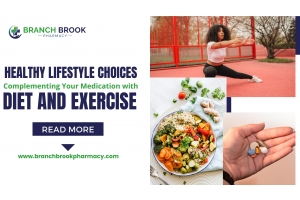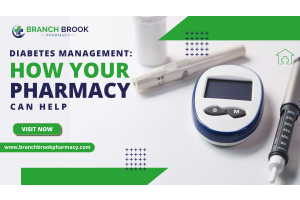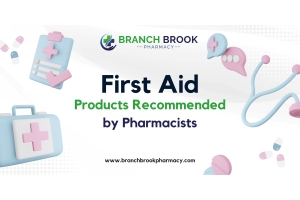Sun Safety Essentials: Protecting Your Skin This Summer

Summer is synonymous with fun under the sun, but it's essential to ensure you're protecting your skin from harmful UV rays. Whether you're lounging by the pool, hiking in the mountains, or simply running errands, sun safety should always be a priority. In this article, we'll discuss the essential steps you need to take to safeguard your skin from UV radiation and enjoy the sunny season safely.
Understanding Sun Exposure
Before diving into sun safety tips, it's crucial to understand the types of UV radiation and the risks associated with sun exposure. UV radiation is categorized into three types: UVA, UVB, and UVC. While UVC is absorbed by the Earth's atmosphere and doesn't reach the skin, both UVA and UVB can cause damage. Prolonged exposure to UV radiation can lead to sunburn, premature aging, and even skin cancer.
Sun Safety Tips for Schools
| Category | Tip | Explanation |
| Reduce Sun Exposure | Schedule outdoor activities during shade times (mornings/late afternoons) | Avoid peak sun hours (typically 10 am - 4 pm) when UV rays are strongest. |
| Seek Shade | Encourage the use of playgrounds and sports fields with ample shade (trees, canopies). | Provide shade structures or encourage students to find shade during breaks and non-activity times. |
| Clothing | Promote sun-protective clothing (long sleeves, pants, hats with wide brims). | Lightweight, tightly woven fabrics with a UPF (Ultraviolet Protection Factor) rating of 50+ offers optimal sun protection. |
| Sunscreen | Encourage students to apply a broad-spectrum sunscreen with SPF 30 or higher. | Apply sunscreen 15 minutes before going outside and reapply every two hours, or more often if sweating or swimming. |
| Sunglasses | Recommend sunglasses that block UVA and UVB rays. | Look for sunglasses labelled "UV 400" to ensure maximum protection. |
| Hydration | Remind students to drink plenty of water throughout the day. | Sun exposure can lead to dehydration, so staying hydrated is crucial. |
| Education | Integrate sun safety lessons into the curriculum. | Teach students about the dangers of sun exposure and how to protect themselves. |
| Communication | Partner with parents to reinforce sun safety messages. | Encourage parents to send their children to school with sunscreen, hats, and sun-protective clothing. |
| Supervision | Ensure adult supervision during outdoor activities. | Adults can help remind students to reapply sunscreen and seek shade as needed. |
| Skin Cancer Awareness | Educate students about skin cancer and the importance of sun safety. | Early detection is key, so encourage students to look out for any changes in their moles or freckles. |
Beat the Heat: Sun Safety for Working Professionals
Sun Safety Tips
Using Sunscreen Effectively
Sunscreen is your best defence against UV radiation. Choose a broad-spectrum sunscreen with SPF 30 or higher, and apply it generously to all exposed skin. Remember to reapply every two hours, especially if you're swimming or sweating.
Wearing Protective Clothing
In addition to sunscreen, wearing protective clothing can provide extra protection. Opt for tightly woven fabrics and dark colours, and don't forget to wear a wide-brimmed hat and sunglasses to shield your face and eyes.
Staying Hydrated
Staying hydrated is essential, especially when spending time outdoors in the sun. Drink plenty of water throughout the day to prevent dehydration and keep your skin hydrated from the inside out.
Choosing the Right Sunscreen
Understanding SPF
SPF, or Sun Protection Factor, measures how effectively a sunscreen protects against UVB rays. Higher SPF numbers indicate greater protection, but no sunscreen can block 100% of UV radiation. It's essential to reapply sunscreen regularly, regardless of the SPF.
Data on Increasing Summer Heat (Past 5 Years):

Importance of Broad-Spectrum Protection
Look for sunscreens labelled as "broad-spectrum," which means they protect against both UVA and UVB rays. This ensures comprehensive protection against sun damage and reduces the risk of sunburn, premature aging, and skin cancer.
Protective Clothing for Sun Safety
UPF Clothing
UPF (Ultraviolet Protection Factor) clothing is specially designed to block UV rays. Look for clothing with a UPF rating of 50+ for maximum protection, and consider wearing UPF swimwear for added sun safety at the beach or pool.
Hats and Sunglasses
Wide-brimmed hats provide excellent protection for your face, neck, and ears, while sunglasses with UV protection shield your eyes from harmful UV rays. Choose sunglasses that block 100% of UVA and UVB rays for optimal eye protection.
Staying Hydrated in the Sun
Importance of Hydration
Dehydration can make your skin more susceptible to sun damage and heat-related illnesses. Drink water regularly, even if you don't feel thirsty, and avoid alcoholic and caffeinated beverages, which can dehydrate you.
Tips for Staying Hydrated
Carry a reusable water bottle with you wherever you go, and aim to drink at least eight glasses of water a day. If you're sweating heavily or engaging in physical activity, drink even more to replenish lost fluids.
Sun Safety for Sensitive Skin
Special Considerations for Sensitive Skin
If you have sensitive skin, it's essential to choose sunscreen and skincare products formulated for sensitive skin types. Look for hypoallergenic and fragrance-free options to minimize the risk of irritation and allergic reactions.
Choosing Appropriate Products
Opt for mineral-based sunscreens containing zinc oxide or titanium dioxide, which are less likely to cause irritation than chemical sunscreens. Additionally, choose lightweight, non-comedogenic moisturizers to keep your skin hydrated without clogging pores.
Common Myths About Sun Safety
Myth: Dark Skin Doesn't Need Sunscreen
While darker skin tones have more natural protection against UV radiation, they are still susceptible to sun damage and skin cancer. Everyone, regardless of skin colour, should wear sunscreen daily to protect against UV rays.
Myth: You Can't Get Sunburned on a Cloudy Day
UV rays can penetrate clouds and cause sunburn, even on overcast days. It's essential to wear sunscreen and practice sun safety measures regardless of the weather forecast.
Sun Safety for Children
Extra Precautions for Kids
Children's skin is more delicate and prone to sunburn, so it's crucial to take extra precautions. Keep infants under six months old out of direct sunlight, and dress children in lightweight clothing that covers their skin.
Choosing Kid-Friendly Sunscreens
Look for sunscreens specifically formulated for children, with gentle ingredients that won't irritate their skin. Apply sunscreen to children's exposed skin at least 30 minutes before going outside, and reapply regularly, especially after swimming or sweating.
Sun Safety on the Go
Tips for Outdoor Activities
Whether you're hiking, biking, or playing sports, it's essential to practice sun safety on the go. Wear a hat, sunglasses, and sunscreen with you, and seek shade whenever possible, especially during peak sun hours.
Reapplying Sunscreen
Don't forget to reapply sunscreen every two hours, or more frequently if you're sweating or swimming. Bring a travel-sized sunscreen bottle with you for easy reapplication throughout the day.
Sun Safety at the Beach
Extra Precautions for Beach Days
Beach days require extra sun safety precautions due to increased sun exposure and reflection of the water and sand. Use a waterproof sunscreen with a high SPF, and reapply it every hour, especially after swimming or towel-drying.
Dealing with Sand and Water
Apply sunscreen generously to all exposed skin, including your feet, hands, and ears. Wear a wide-brimmed hat and UV-protective sunglasses, and seek shade under an umbrella or beach tent when taking breaks from the sun.
After-Sun Care
Soothing Sunburned Skin
If you do get sunburned, soothe your skin with aloe vera gel or a gentle moisturizer containing ingredients like oatmeal or chamomile. Avoid further sun exposure until your skin has healed, and drink plenty of water to hydrate from the inside out.
Hydrating and Moisturizing
Keep your skin hydrated and moisturized after sun exposure to prevent peeling and dryness. Apply a lightweight, hydrating moisturizer to damp skin to lock in moisture, and drink plenty of water to replenish lost fluids.
Conclusion
Protecting your skin from the sun is essential year-round, but it's especially crucial during the summer months when UV radiation levels are at their highest. By following these sun safety essentials, you can enjoy the sun safely while minimizing the risk of sunburn, premature aging, and skin cancer. Remember to wear sunscreen, protective clothing, and sunglasses, stay hydrated, and seek shade whenever possible.
Also Read: Kiss Filters Goodbye! Get That Lit-From-Within Look with Natural Makeup Must-Haves
FAQs (Frequently Asked Questions)
Q. Is sunscreen necessary on cloudy days?
A. Yes, UV rays can penetrate clouds, so it's important to wear sunscreen even when it's overcast.
Q. Can I use expired sunscreen?
A. It's best to avoid using expired sunscreen, as it may not provide adequate protection. Check the expiration date and replace sunscreen as needed.
Q. How often should I reapply sunscreen?
A. Reapply sunscreen every two hours, or more frequently if you're sweating or swimming.
Q. Do I need sunscreen if I have dark skin?
A. Yes, everyone should wear sunscreen daily, regardless of skin colour, to protect against UV radiation.
Q. Can I skip sunscreen if I'm wearing makeup with SPF?
A. While makeup with SPF can provide some protection, it's not enough on its own. Apply sunscreen underneath your makeup for optimal sun protection.
For further sun safety tips and product recommendations, visit cutepakistani.com and browse their selection of sunscreen and protective clothing.
‘» » Reach out to us for any query: Contact us










